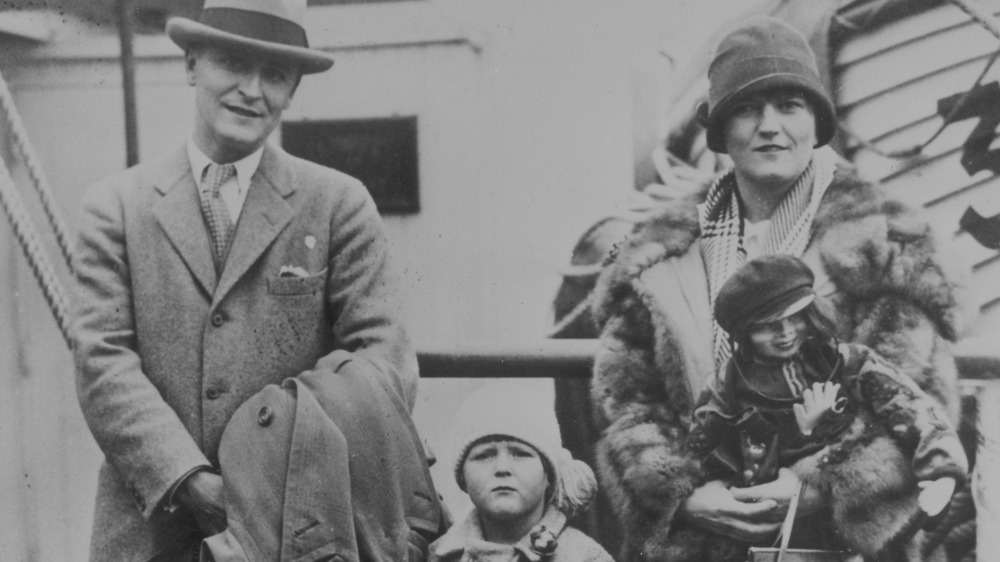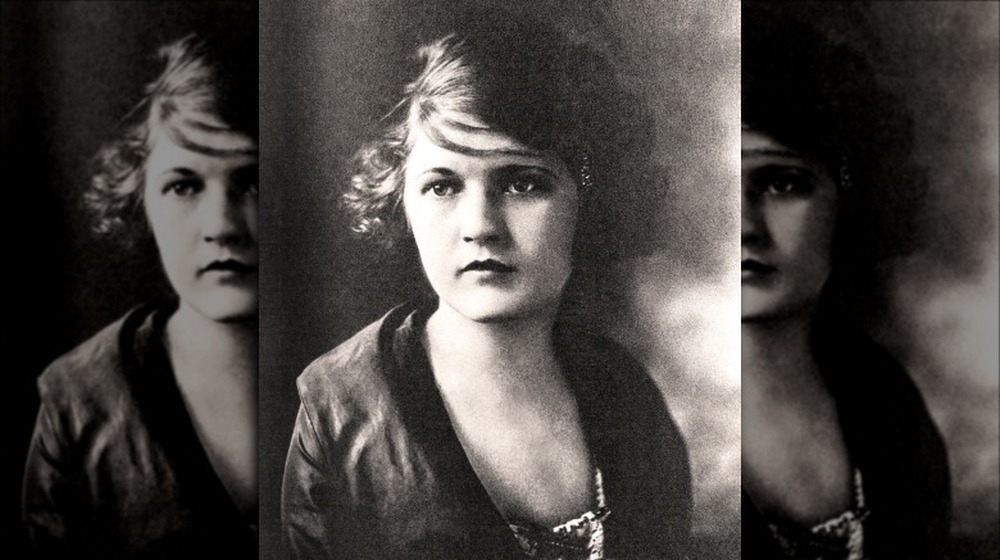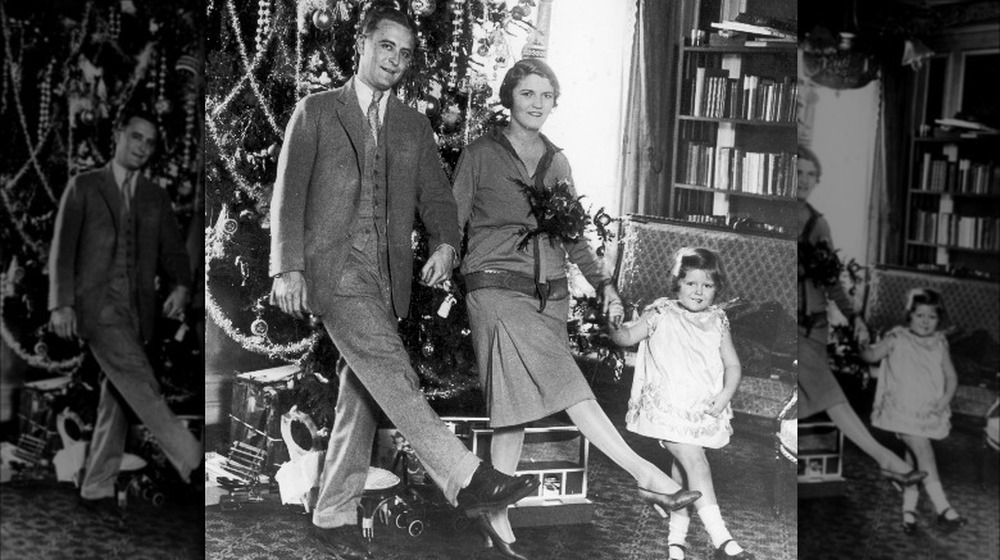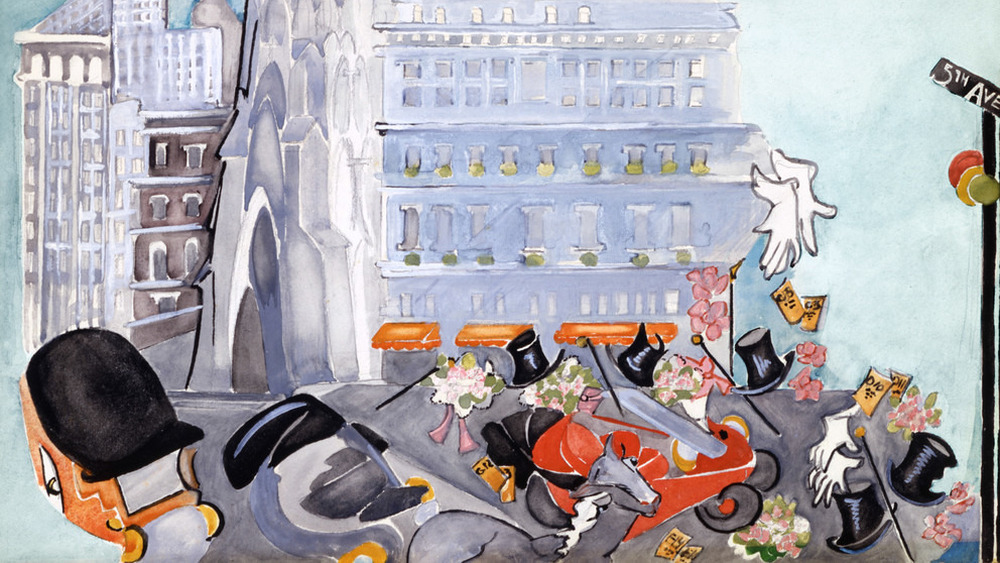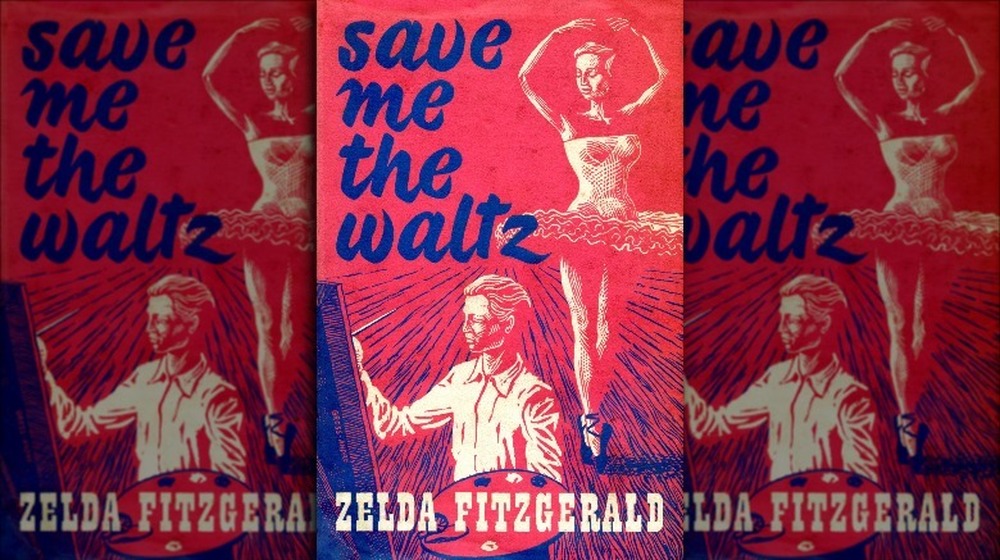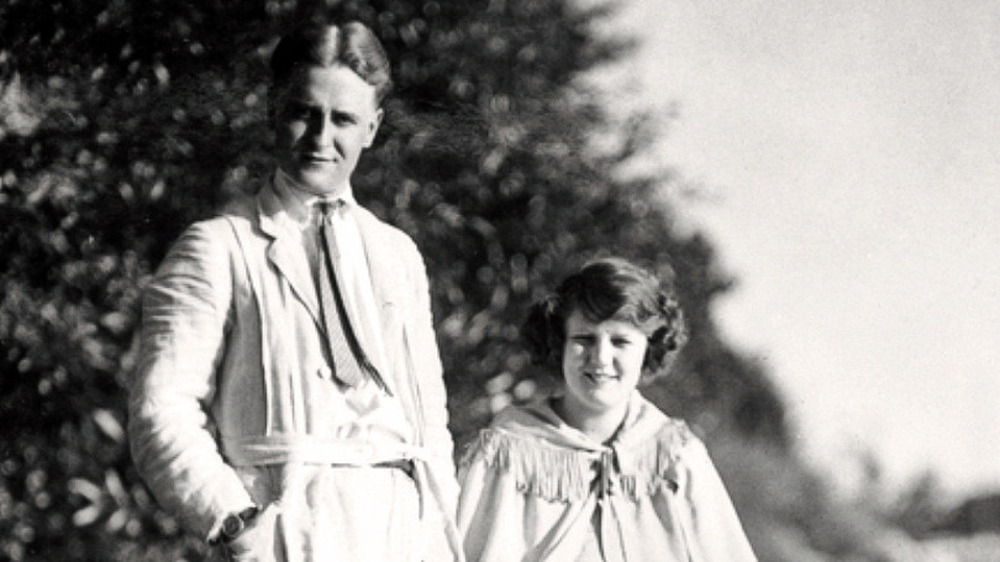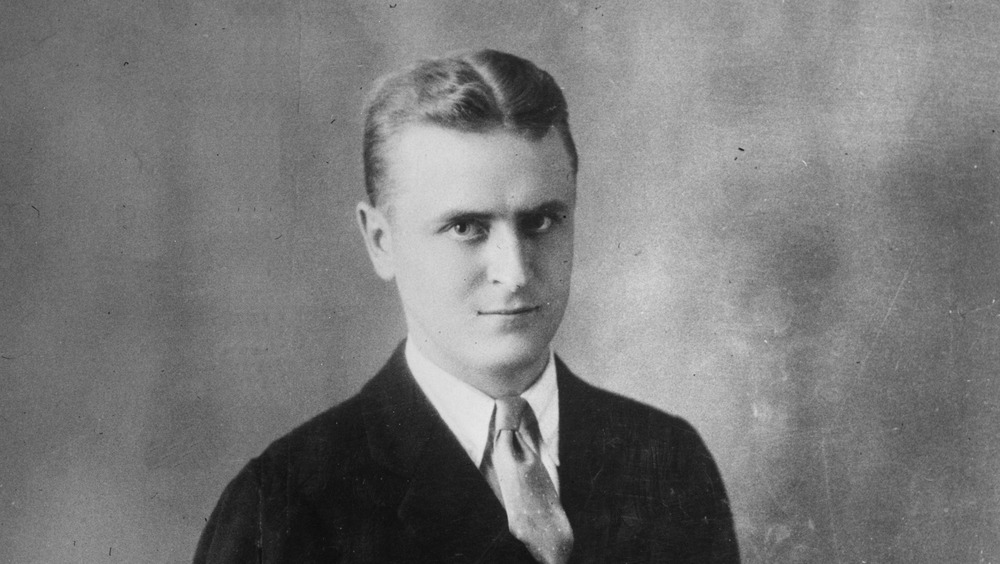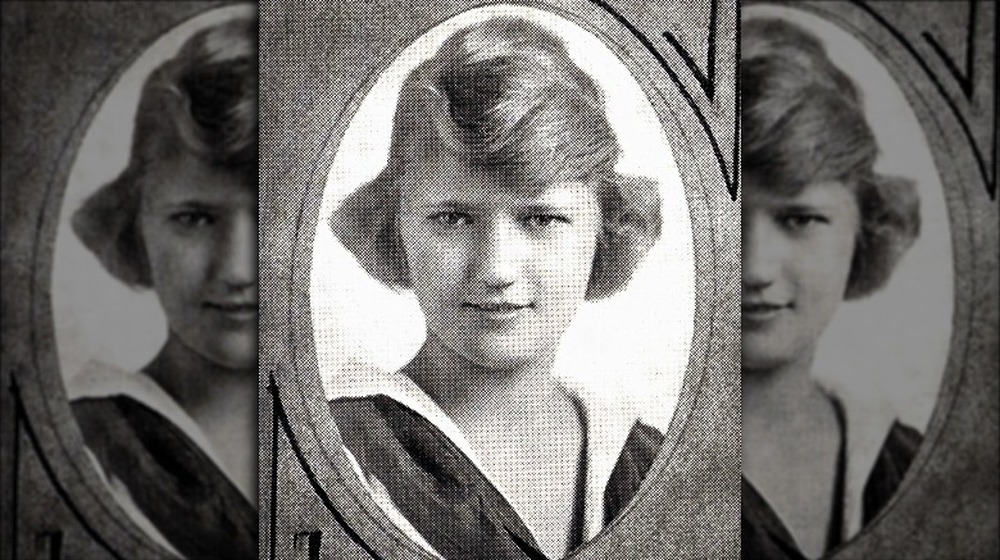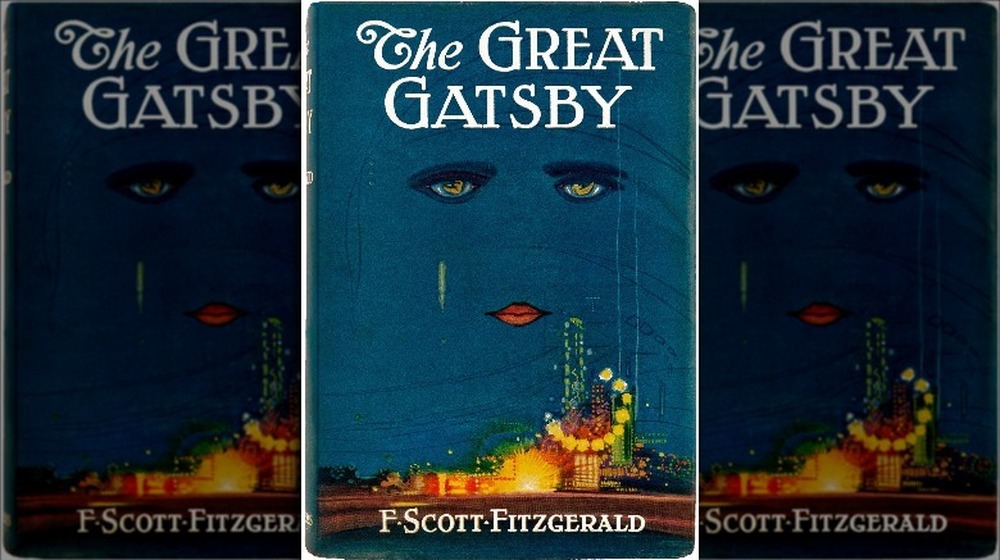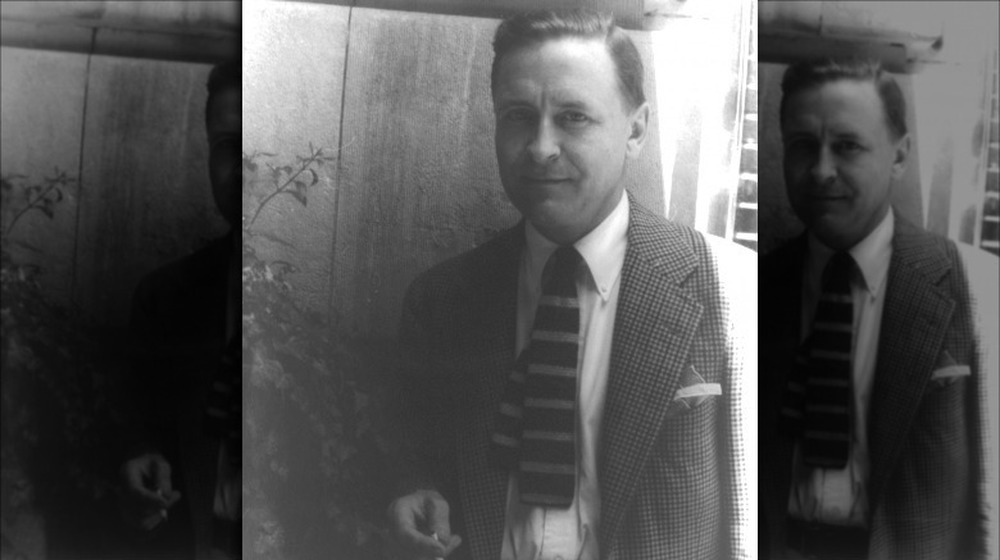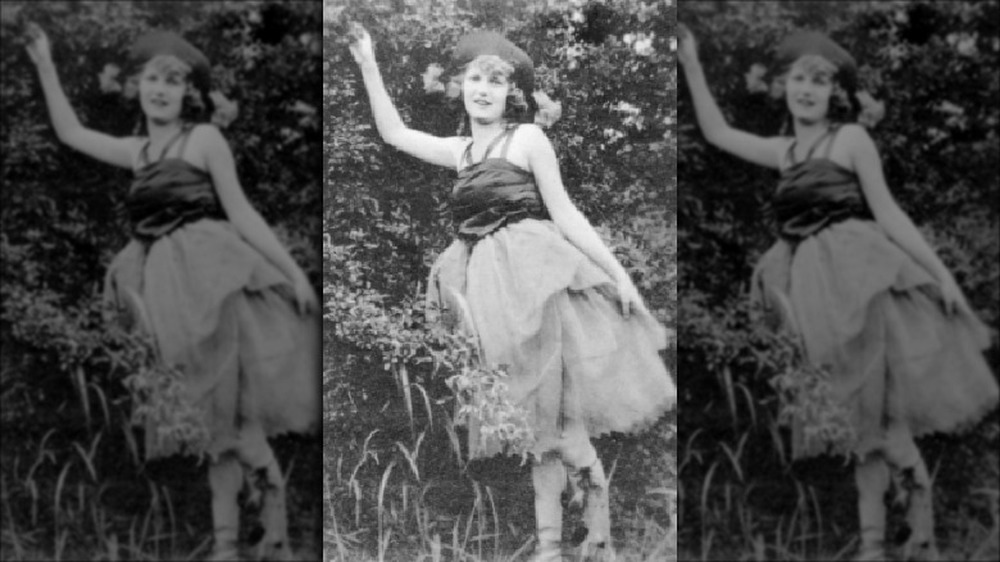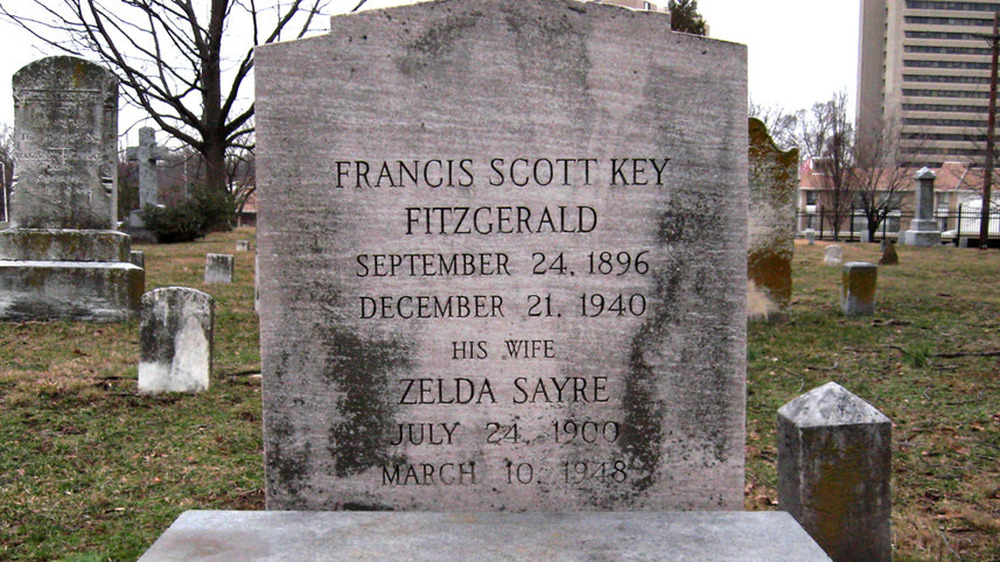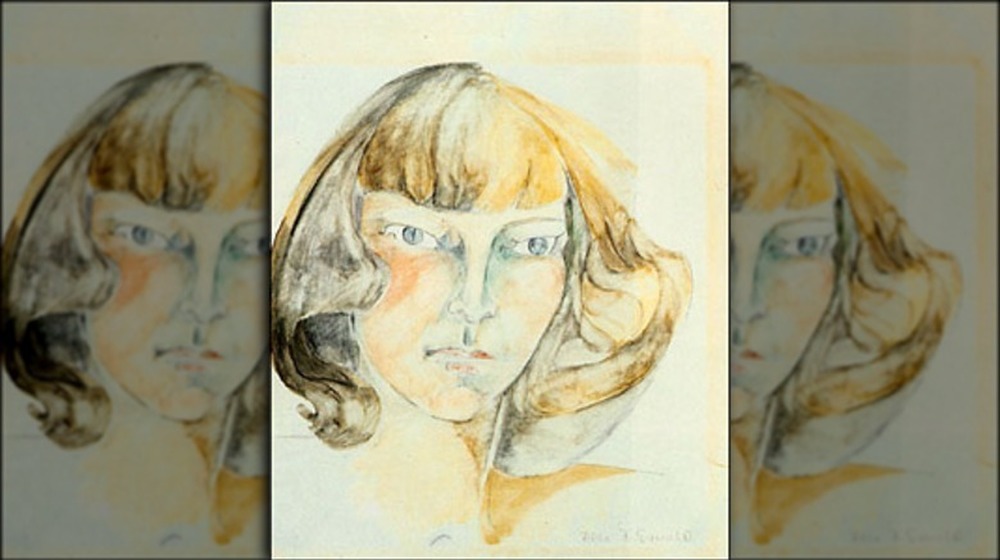The Tragic Real-Life Story Of F. Scott And Zelda Fitzgerald
A century later, the Roaring Twenties still retains its hold on the American imagination. Lavish parties, conspicuous consumption, hot jazz, and illegal cocktails combined into a fever-dream of uniquely American overindulgence, marked by iconic fashions and design that retain their sheen of modernity. As ubiquitous as Jazz Age imagery is in our collective imaginations, most of us don't realize that the picture of the 1920s is almost certainly based on mental images of something F. Scott Fitzgerald wrote about his wife, Zelda Fitzgerald.
The Fitzgeralds mirror their moment in history almost perfectly. They had extremely American beginnings (she a Southern Belle, he a Midwestern boy) and crashed onto the public scene in 1920 with the publication of his first novel, This Side of Paradise. The book was a success, and the Fitzgeralds were the toast of the American literary scene — for a while. Like the country around them, their Roaring Twenties curdled into a Great Depression, and the Fitzgeralds's love affair ended in alcoholism, mental illness, and untimely death.
Along the way they both created incredible works of art — and they clung to each other through it all, even when separated in emotional and physical terms. Their love story continues to fascinate no matter how time goes by because it combines talent, beauty, darkness, and failure into an irresistible drama. Here's the tragic real-life story of F. Scott and Zelda Fitzgerald.
Zelda Fitzgerald was Scott's muse
F. Scott Fitzgerald met Zelda Sayre in 1918, when he was 22 and she was just 18 years old. He was in the army, and she was the wild child of a local judge. Their attraction was instant. As The Washington Post reports, they began writing letters to each other immediately, and the only person who had any doubt that this was the beginning of a great romance was Zelda's mother, who kept giving her daughter newspaper clippings about failed writers.
As F. Scott settled into New York to write, Zelda quickly became his main inspiration. As The Ringer notes, he explicitly and intentionally based several early characters on Zelda, most notably Rosalind in his first novel, This Side of Paradise, and Nicole in Tender is the Night. In fact, Zelda and his relationship to her became an increasing focus for his fiction. Tender is the Night is a fictionalized account of his marriage to Zelda, their promising beginning, and slow slide into failure. It's fitting that it's also the last novel he completed.
Zelda wasn't just inspiration for Scott, she was also a key part of his success. Zelda used her celebrity to promote her husband's work, writing cheeky, humorous reviews that focused on her need for him to be successful so she could purchase the beautiful clothes she coveted and giving interviews singing his praises.
They lived large but were always broke
The Great Gatsby is often viewed as the epitome of the 1920s in this country — new money hosting huge parties soaked in champagne, jazz, and high fashion. And that's exactly how the Fitzgeralds lived — for a while.
F. Scott Fitzgerald's first novel, 1920's This Side of Paradise, was an instant hit and bestseller. The novel's success allowed him to marry Zelda and made him a celebrity at the age of 23. The young couple reveled in their notoriety and their newfound wealth. As Great Writers Inspire notes, they immediately began living beyond their means, paying for lavish houses and expensive dinners, drinking and dancing their nights away. Scott's second novel, The Beautiful and the Damned, was also a bestseller, allowing them to keep up their new lifestyle.
Even at the height of their fame and success, the Fitzgerald's struggled with money, spending it faster than it came in. As their granddaughter notes at Literary Hub, Zelda and Scott borrowed heavily to keep things going — from his agent, his editors, even from friends. Scott was almost immediately forced to write short fiction in order to bring in extra income, which he felt distracted him from his more important work, but their ever-present debts kept him on a treadmill of working to pay off loans, then borrowing more. As The Washington Post notes, by 1937 the Fitzgeralds were flat broke.
Zelda Fitzgerald wanted to be a painter and a dancer
Zelda Fitzgerald was a tortured soul in many ways. Mentally and emotionally fragile, she was married at just 20 years old and subsumed into a celebrity union that was dominated by her husband's fame. But Zelda was a talented woman who aspired to express herself in many different ways. It's a tragedy that she's still remembered chiefly as F. Scott Fitzgerald's wife.
As The Huffington Post reports, Zelda painted seriously, even when she was hospitalized. While often dismissed when originally exhibited, Zelda's art has undergone a reevaluation in recent years, with modern critics finding her modern style vibrant and emotionally affecting. She was also noted for her design and decorative skills, crafting unique lampshades and other home decor that captured the imagination.
As Literary Hub notes, in the 1920s it wasn't usual for a married woman to seek her own artistic identity, so Zelda found her efforts to pursue that side of her personality subtly resisted. She always loved dance, and at the relatively advanced age of 27, she decided to pursue ballet seriously. The New Yorker reports that Zelda probably found ballet an escape from her circle of literary acquaintances, a place where she wasn't in competition with other writers — or her own husband.
Many think the physical strain of dance training pushed Zelda to her limits and may have contributed to her first serious breakdown in 1930.
Zelda Fitzgerald was a writer in her own right
Zelda Fitzgerald is mainly remembered as the wife of F. Scott Fitzgerald, a woman who burst onto the public scene a glamorous symbol of the Roaring Twenties and then fell into a deep hole of mental illness. But Zelda was a talented writer and managed to publish one novel in her short, tragic life — 1932's Save Me the Waltz.
As Patch.com reports, the novel was written while Zelda recovered from her first major breakdown and. like her husband's work. is based closely on her own experiences, leading it to be referred to as "Asylum Autobiography." The parallels are striking — a Southern Belle marries a brilliant artist, they become celebrities, her dreams of a ballet career are ruined, everything turns sour. As Modernism/Modernity notes, her husband was furious with her for writing it and tried to stop her from having it published. Zelda sent the manuscript directly to their publisher, side-stepping Scott, which enraged him further. He eventually forced her to make several revisions to the manuscript, and readers may never know how deeply the novel was altered because the original draft is lost.
The reviews were not good. As The Vintage News reports, The New York Times wrote, "It is not only that her publishers have not seen fit to curb an almost ludicrous lushness of writing but they have not given the book the elementary services of a literate proofreader."
Zelda Fitzgerald never got due credit for her writing
Although Zelda Fitzgerald's only published novel, Save Me the Waltz, received poor reviews and faded from the public's consciousness relatively quickly, she was a very talented writer. In fact, you might not be aware of just how talented Zelda was because most of her best work appeared under her husband's name.
As Alabama Public Radio notes, it's well-known that F. Scott Fitzgerald incorporated some of Zelda's actual diary entries and witty things she said in conversation into his novels. As Literary Hub makes clear, this wasn't even a secret at the time — Scott openly discussed her influence and inspiration, and Zelda even made a joke of it in her review of his second novel, saying, "In fact, Mr. Fitzgerald — I believe that is how he spells his name — seems to believe that plagiarism begins at home."
Worse, as Blue Ridge Country notes, many of the short stories officially published under Scott's name were actually written by Zelda. Publishers knew that they would sell better with Scott's name, and even when she managed to publish a story under her own name they often added his to the byline just to increase sales. As a result, Zelda's literary reputation was always unfairly obscured by her more famous husband.
They cheated on each other
It's easy to look back on the Fitzgerald marriage and assume they were simply doomed from the start. Beautiful, talented, and deeply flawed, Scott and Zelda Fitzgerald battled demons ranging from mental illness to alcoholism and lost. When they first married, they were deeply in love and widely adored — but it didn't take long for the first cracks to show.
By 1924, Scott was already in decline. It had been two years since his second novel, The Beautiful and the Damned, and Scott had spent much of the time writing feverishly in order to pay the couple's enormous bills. As The Washington Post notes, Scott isolated himself that summer in France in order to follow a disciplined schedule writing his third novel, The Great Gatsby. While this plan produced one of the greatest novels of the modern age, it also left Zelda lonely and bored. Blue Ridge Country tells us that Zelda soon met and began an affair with a French man named Edouard Jozan.
Zelda fell hard for Jozan and told Scott she wanted a divorce. Then Jozan disappeared, devastating Zelda — she attempted suicide a short while afterwards. It was a strain that changed their marriage forever. Scott is rumored to have had several affairs himself, but as Alabama Public Radio notes only his relationship with Sheilah Graham in the last years of his life (when Zelda was more or less permanently hospitalized) is a confirmed fact.
If you or anyone you know is having suicidal thoughts, please call the National Suicide Prevention Lifeline at 1-800-273-TALK (8255).
Zelda Fitzgerald was probably bipolar
Zelda Fitzgerald was the It Girl of her time — beautiful, wild, and fashionably influential. When she and F. Scott Fitzgerald became celebrities in their early 20s, they seemed to lead an enviable existence. There were parties, expensive clothes, and drunken antics that lent a sheen of glamour to their literary achievements and beauty.
But for every peak, there were deep valleys of depression, and as Zelda traded manic periods of productivity with dark periods of hospitalization, many believe they see the unmistakable pattern of bipolar disorder. NPR notes that Zelda's behavior was categorized by "periods of depression" followed by "periods of high energy and creativity" — which fits the broad definition of bipolar disorder perfectly.
As The Guardian reports, Zelda's initial mental breakdown was diagnosed as schizophrenia, which had only been codified as a mental illness a few years earlier. In the days before psychotropic drugs, there were few treatments — as NPR notes, most mentally ill people were simply restrained and left to their own devices. Zelda was fortunate to find treatment at Highland Hospital, which tried the cutting-edge approach of occupying patients with activities and a healthy lifestyle.
Sadly, Zelda spent the last 15 years of her life in and out of hospitals. Although Scott never divorced her, they were officially separated for much of the last decade of their marriage.
They were washed up before 35
Few artists enjoy the sort of early success the Fitzgeralds had. In 1920, when F. Scott Fitzgerald was 24 and Zelda Fitzgerald 20 years old, Scott's first novel, This Side of Paradise, was a bestselling hit, rocketing him to the top tier of literary stars. Zelda was celebrated as his equally talented, beautiful partner. They were quite suddenly rich and famous and soon had a darling baby girl.
As The Guardian notes, just ten years later they were essentially washed up — Scott was miserably grinding out work in Hollywood to pay the bills, and Zelda's mental state was fragile at best, leaving her flitting in and out of hospitals for the rest of her life. As PBS Newshour explains, Zelda's afflictions stemmed from her brain chemistry (she was diagnosed as a schizophrenic but was more likely suffering from bipolar disorder) and Scott's from his alcoholism. Scott was hospitalized for alcohol-related problems eight times between 1933 and 1937, and a lifetime of excessive drinking and smoking ruined his heart, leading to his early death.
Worse, it affected his writing — and Scott knew it, often lamenting that drinking got in the way of good writing. His third novel, The Great Gatsby, was a commercial and critical failure when it was published in 1925, sending Scott into a tailspin. Just five years after being the toast of the literary world and after producing what he thought was a brilliant novel, he was considered a has-been.
F. Scott Fitzgerald attempted suicide
F. Scott Fitzgerald's career started off white hot — at one point he was earning about $4,000 (about $60,000 in 2020 money) for short stories in The Saturday Evening Post, which is more than most debut authors get for a full novel. But his decline was rapid and chaotic. An alcoholic, Fitzgerald drank heavily from a very young age, and his disease began to catch up with him when he was still a young man. After the spectacular failure of his third novel, The Great Gatsby, his professional prospects dried up and his drinking worsened. In order to pay the bills he wrote short stories for fast money and went to work in Hollywood writing B-movie scripts.
His decline was obvious, to both himself and literary critics. As Literary Hub reports, Fitzgerald himself was depressed about the quality of his work in the years that followed Gatsby, and in 1936 the literary world's opinion of him was made harshly clear when The New York Post published a scathing article detailing how little Fitzgerald had accomplished in the previous decade.
Fitzgerald was just turned 40 years old, and the article hit him hard. Despairing, he took a large dose of morphine in an effort to end his own life. He took too much too quickly, however, and vomited up most of the dose, saving his life.
If you or anyone you know is having suicidal thoughts, please call the National Suicide Prevention Lifeline at 1-800-273-TALK (8255).
Zelda Fitzgerald may have been assaulted as a teen
Zelda Fitzgerald was ultimately a tragic figure — a beautiful, brilliant woman whose artistic ambitions were suffocated by her husband and a devastating battle with mental illness. While most people focus on her life with F. Scott Fitzgerald, the roots of Zelda's misery may extend back into her childhood.
As Alabama Public Radio notes, biographer Sally Cline claims that Zelda was sexually assaulted by two members of Alabama's high society when she was just 15 years old. In Cline's book, it's made clear that Zelda did in fact have her first sexual experience when she was that age — Scott wrote in a letter to Zelda's sister, "Your mother took such rotten care of Zelda that John Sellers was able to seduce her at fifteen." Sellers was a member of Montgomery's society, who Zelda dated briefly before marrying Scott. Zelda herself alludes to the assault in her unfinished novel, Caesar's Things.
As Cline notes, Sellers married another local girl, Sara Mayfield, but they divorced three years later amidst accusations of heavy drinking and "sexual violence." Divorce in 1920s Alabama was unheard of, giving some idea of what Mayfield had to endure as Sellers' wife.
F. Scott Fitzgerald died young
In 1940 F. Scott Fitzgerald wrote in despair to his wife, Zelda Fitzgerald, saying that he was a "forgotten man," due to his declining literary reputation in the wake of the failure of his third and fourth novels, The Great Gatsby and Tender is the Night. Two decades after achieving bestseller status and literary fame, Scott was a has-been. As The Washington Post notes, he was even having trouble getting hired by Hollywood film studios because of his heavy drinking.
Scott was plotting a comeback with his fifth novel, The Last Tycoon, based on his experiences in Hollywood. But decades of heavy drinking and smoking had ruined his health. As PBS Newshour reports, Scott suffered from cardiomyopathy and coronary artery disease and had a mild heart attack in October 1940. On December 20, he went out to the movies and collapsed, experiencing chest pains. He was helped home and went to bed. The next day he suffered a massive heart attack and died, aged just 44.
There was one final insult. As Literary Hub notes, Scott's novels had been placed on the Catholic Church's "proscribed list" due to their salacious content — so permission to bury him in his family's plots was denied. He was laid to rest miles away from his family — although when Zelda passed away eight years later, they were finally and permanently reunited.
Zelda Fitzgerald died horribly
Zelda Fitzgerald outlived her husband by eight years and seemed on the verge of finally achieving some kind of peace. After suffering her first mental breakdown in 1930, Fitzgerald struggled with her mental health for the rest of her life. After several stints in sanitariums over the years, she began to spend more and more time at Highland Hospital in Asheville, N.C. As Blue Ridge Country notes, over the final decade of her life she returned to Highland several times for lengthy treatments.
In March of 1948, her doctors told her they considered her stable enough to go home again. Fitzgerald was cautious, however. Worried about her stability, she chose to remain a few more months to gain confidence in her recovery. As reported by Blue Ridge Country, a few days later a fire broke out in the hospital. Because the windows and doors were locked and chained shut, the patients had no way to escape — and nine burned to death in the fire. Four of the women, including Fitzgerald, had been given strong sedatives, so it's likely she died in her sleep. She was identified by the iconic red slippers she always wore.
The fire may have been an act of arson. The night nurse supervisor at Highland gave herself up to police claiming she'd set the fire, but no charges were ever brought.
